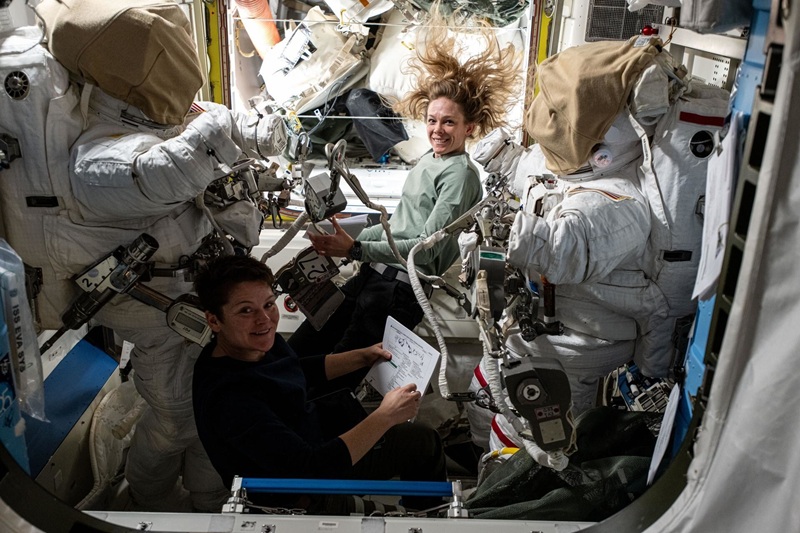Solar Orbiter, the European Space Agency’s flagship mission to the Sun, has cracked one of heliophysics’ persistent enigmas: for the first time, it has traced the journey of superfast electrons all the way from their origin on the Sun out into the wilds of space—and split these floods of energetic particles into two fundamentally different groups. The findings, published on September 1 in Astronomy & Astrophysics, deepen scientists’ understanding of the Sun as nature’s mightiest particle accelerator and cast new light on how Earth (and the technology orbiting it) might fare the next time the Sun lashes out with a major solar storm.
Two Stories, One Source: Solar Energetic Electrons
For decades, solar physicists have known that the Sun hurls torrents of electrons outward at nearly the speed of light, resulting in what they call Solar Energetic Electrons (SEEs). But while these particles have long been detected across the Solar System, their exact launch conditions and origins on the Sun have remained elusive—until now.
Thanks to Solar Orbiter’s ability to swoop closer to the Sun than any previous spacecraft, the mission observed and catalogued more than 300 SEE outbursts between November 2020 and December 2022, using eight of its ten on-board instruments. By observing hundreds of SEE events at varying distances from the Sun, Solar Orbiter provided an unprecedented “pristine” view—allowing researchers to pinpoint precisely where and when these electrons started their journey.
According to lead author Alexander Warmuth of the Leibniz Institute for Astrophysics Potsdam, “We see a clear split between ‘impulsive’ particle events, where these energetic electrons speed off the Sun’s surface in bursts via solar flares, and ‘gradual’ ones associated with more extended coronal mass ejections (CMEs), which release a broader swell of particles over longer periods”.
Solar Flares: These are explosive events from smaller patches on the Sun’s surface. They unleash a sharp, intense burst of energetic electrons—these are the “impulsive” events.
Coronal Mass Ejections: In contrast, CMEs are massive eruptions of the Sun’s atmospheric plasma and magnetic field. They release electrons in a slower, swelling wave, creating “gradual” events that deliver more high-energy particles over a longer time.
The Power of Proximity: Measuring Pristine Solar Particles
What sets this research apart is Solar Orbiter’s ability to capture these electrons almost at their source, before their properties are altered by crossing millions of kilometers of chaotic space. By measuring SEE events at different distances, the mission illuminated how solar particles start from their birthplace and are sculpted by their journey through the Solar System.
“We were only able to identify and understand these two groups by observing hundreds of events at different distances from the Sun with multiple instruments—something only Solar Orbiter can do,” added Warmuth. “By going so close to our star, we could measure the particles in a ‘pristine’ early state and thus accurately determine the time and place they started at the Sun”.
Delays on the Sun-Earth Highway: Why Some Electrons Lag Behind
One long-standing puzzle in solar physics is why there’s often a lag—sometimes hours—between seeing dramatic events on the Sun and detecting their energetic electron outbursts passing spacecraft and arriving at Earth. Solar Orbiter’s data reveal that these delays are due not just to lag in their release, but also to the turbulent, winding route electrons must take through the Sun’s extended magnetic field.
The space between the planets is filled with the solar wind—a constant flow of charged particles dragged outward by the Sun’s magnetic field. This turbulent “wind” acts like a magnetic pinball machine, scattering, trapping, and diverting electrons in all directions. As they are buffeted by this environment, their arrival at any one location in space is delayed—which explains why so many electrons seem to lag far behind their solar launch.
“As you move further from the Sun, these effects build up, so it becomes more challenging to ‘see’ the electrons in their original form,” explained ESA Research Fellow Laura Rodríguez-García.
Relevance to Space Weather and Earth Safety
Solar Orbiter’s breakthrough comes with real-world consequences: understanding and distinguishing these two types of energetic electron events is a major step toward better space weather forecasting. While solar flares produce intense but short-lived electron bursts, it’s the slower, more pervasive electrons from CMEs that pose the greatest risk, as they carry higher energies and threaten the safety of satellites, astronauts, and ground-based technology.
“Knowledge such as this from Solar Orbiter will help protect other spacecraft in the future, by letting us better understand the energetic particles from the Sun that threaten our astronauts and satellites,” said ESA Project Scientist Daniel Müller. “The research is a really great example of the power of collaboration—it was only possible due to the combined expertise and teamwork of European scientists, instrument teams from across ESA Member States, and colleagues from the US”.
The Era of Real-Time Solar Storm Warnings
Solar Orbiter’s achievement fulfills one of its main goals: to observe the Sun and its surroundings almost continuously, linking events on our star directly to what is detected in interplanetary space. As Daniel Müller notes, “During its first five years in space, Solar Orbiter has observed a wealth of Solar Energetic Electron events. As a result, we’ve been able to perform detailed analyses and assemble a unique database for the worldwide community to explore”.
The near future holds even more promise:
- ESA’s Vigil Mission (launching in 2031) will for the first time provide a continuous “side-on” view of the Sun, detecting hazardous solar eruptions before they rotate into view from Earth, giving much earlier warnings of potential space weather impacts.
- ESA’s Smile Mission (launching 2026) will investigate how these energetic solar winds and bursts interact with and sometimes breach Earth’s magnetic field, helping scientists understand and model our planet’s responses to solar storms.
International Spirit: Solar Orbiter’s Legacy
Solar Orbiter is a truly international collaboration, operated by ESA with strong cooperation from NASA. The mission’s unique perspective and advanced suite of instruments have fueled a new era in solar research—one where scientists can trace the journey of solar particles from their explosive origins to their effects on the Earth’s environment and technology.
Lead author Alexander Warmuth and his colleagues have assembled one of the most comprehensive solar electron event catalogues ever created—a resource likely to drive solar research for years to come. The full results appeared in Astronomy & Astrophysics, in a publication led by Warmuth et al., “CoSEE-Cat: a Comprehensive Solar Energetic Electron event Catalogue obtained from combined in-situ and remote-sensing observations from Solar Orbiter,” September 2025.
Acknowledgements: ATG Europe, CoSEE-Cat consortium





